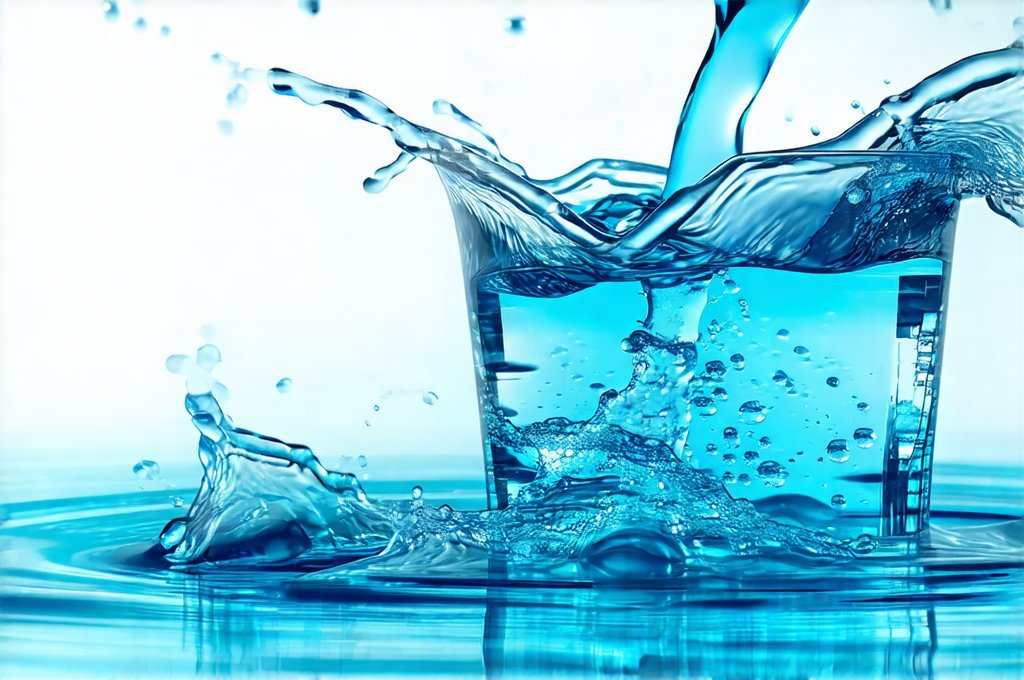Living with a sensitive bladder can significantly impact daily life. Many individuals experience urgency, frequency, discomfort, or even pain due to various underlying causes, ranging from infections and inflammation to interstitial cystitis (IC) and overactive bladder (OAB). While managing these conditions often involves medical intervention, dietary adjustments—specifically concerning fluid intake—can play a crucial role in symptom management. However, navigating the world of hydration when you have a sensitive bladder isn’t always straightforward; not all liquids are created equal, and what works for one person might exacerbate symptoms in another. Understanding the nuances of different types of water and how they interact with your body is paramount to finding relief and improving your quality of life.
The key is identifying which kinds of water—and related beverages—are least likely to irritate the bladder lining. This isn’t simply about avoiding obvious triggers like caffeine or alcohol, though those are often significant contributors. It involves considering factors like mineral content, pH levels, temperature, and even how the water is processed. For some, plain water is the ideal choice; for others, slightly alkaline water might be preferable. Still others may benefit from filtered water to remove potential irritants. The goal isn’t to eliminate fluids altogether – adequate hydration is vital for overall health—but rather to make informed choices that support bladder comfort and minimize flare-ups. Ultimately, it’s a personalized journey of discovery.
Understanding Water Types & Bladder Sensitivity
The type of water you drink can have a surprising impact on your bladder’s health. It’s not just about how much you drink; the composition of the water itself matters significantly. Tap water, for example, varies greatly depending on its source and treatment processes. Municipal water supplies often contain chlorine and other disinfectants added to ensure safety but can be irritants for sensitive bladders. Similarly, hard water—water with high mineral content (calcium and magnesium)—might contribute to discomfort in some individuals. Bottled water offers an alternative, but even within bottled water, there’s considerable variation. Some brands are sourced from natural springs, while others are purified tap water, and the mineral composition differs accordingly.
The pH level of water is another important consideration. A neutral pH (around 7) is generally considered ideal for bladder health, though some individuals find relief with slightly alkaline water (pH above 7). Alkaline water often contains added minerals like calcium and magnesium, which can potentially soothe the bladder lining. However, it’s crucial to note that excessive alkalinity isn’t necessarily beneficial and could even disrupt the body’s natural pH balance. Furthermore, temperature plays a role; extremely cold water might trigger urgency in some individuals, while room-temperature or slightly warm water is better tolerated.
Finally, filtration can significantly improve water quality for those with sensitive bladders. Filters can remove chlorine, sediment, and other potential irritants from tap water, making it more bladder-friendly. Choosing the right type of filter—carbon filters, reverse osmosis systems, or whole-house filters—depends on your specific needs and concerns regarding water contaminants in your area. A comprehensive understanding of these variables allows you to make informed decisions about which types of water are best suited for minimizing bladder irritation. If UTIs are a concern, consider learning more about best water intake to support recovery.
The Role of Mineral Content & pH Levels
The mineral content of water can profoundly affect those with sensitive bladders. High concentrations of certain minerals, like calcium and magnesium (found in hard water), can sometimes cause discomfort or even exacerbate symptoms. This is because these minerals can create a higher osmolality—concentration of dissolved particles—in the urine, potentially irritating the bladder lining. However, it’s not always about avoiding minerals altogether; some individuals actually find that moderate amounts of magnesium are beneficial due to its muscle-relaxing properties, which could help reduce bladder spasms. The key is finding a balance and understanding your body’s individual response.
The pH level of water—its acidity or alkalinity—is another crucial factor. As previously mentioned, a neutral pH (around 7) is generally considered ideal, but some people with sensitive bladders report experiencing fewer symptoms when drinking slightly alkaline water. The rationale behind this is that alkaline water may help neutralize acidic urine, reducing irritation to the bladder lining. However, there’s ongoing debate regarding the effectiveness of alkaline water for bladder health, and it’s essential to approach it cautiously. Excessive alkalinity can disrupt the body’s natural pH balance and potentially lead to other health issues. It is also important to note that while some water brands are marketed as “alkaline,” the added alkalinity may not be sustained once the water interacts with the acidic environment of the stomach.
Determining your ideal mineral content and pH level often requires experimentation and careful observation of your body’s response. Keeping a bladder diary—tracking what you drink, when you drink it, and any associated symptoms—can be invaluable in identifying patterns and pinpointing potential triggers. It’s also crucial to discuss these concerns with your healthcare provider, who can provide personalized recommendations based on your specific condition and medical history.
Identifying Your Personal Water Tolerance
Determining the best water for your sensitive bladder is a process of careful self-observation and experimentation. Start by keeping a detailed bladder diary for at least one week—longer if possible—to establish a baseline understanding of your symptoms and potential triggers. Record everything you drink, including the type of water (tap, bottled, filtered), quantity, time of day, and any associated bladder sensations, such as urgency, frequency, pain, or discomfort. Be specific about the brand of bottled water or filter used if applicable.
- After establishing a baseline, begin experimenting with different types of water one at a time.
- Introduce a new type of water (e.g., filtered tap water) for 2–3 days and carefully monitor your symptoms.
- Compare your symptom levels during each trial period to identify any noticeable differences.
- Repeat this process with other options, such as alkaline water or different brands of bottled water.
Pay close attention to how different factors influence your bladder. For instance, does cold water trigger urgency more than room-temperature water? Does filtered tap water result in fewer symptoms compared to hard tap water? Are you more sensitive to mineral content? Remember that everyone is unique; what works for one person may not work for another. Don’t hesitate to consult with a healthcare professional or registered dietitian who can provide personalized guidance and help you interpret your results. If you struggle with frequent UTIs, learning about best underwear choices could also be helpful.
The Impact of Filtration Systems
Filtration systems play a vital role in improving water quality and reducing potential bladder irritants, particularly for those using tap water. Chlorine, often used to disinfect municipal water supplies, is a common trigger for sensitive bladders. Sediment, rust, and other contaminants can also contribute to discomfort. Several types of filtration systems are available, each with its own strengths and weaknesses:
- Carbon Filters: These filters effectively remove chlorine, sediment, and some organic compounds from tap water, improving taste and odor. They’re relatively inexpensive and easy to install but don’t remove all contaminants.
- Reverse Osmosis (RO) Systems: RO systems are more comprehensive, removing a wider range of contaminants including minerals, heavy metals, and bacteria. However, they can also remove beneficial minerals, resulting in water that some people find less palatable.
- Whole-House Filters: These filters are installed on the main water line, filtering all water entering your home. They offer broad protection but require professional installation and maintenance.
When choosing a filtration system, consider your specific concerns regarding water quality in your area and your individual sensitivity to different contaminants. It’s also important to regularly maintain your filter according to the manufacturer’s instructions to ensure its effectiveness. Some filters need to be replaced frequently (e.g., every few months), while others have longer lifespans.
Water & Other Beverages to Consider Limiting
While water is essential for hydration, certain other beverages can significantly exacerbate bladder symptoms. Caffeine and alcohol are well-known irritants, increasing urgency and frequency. Carbonated drinks—soda, sparkling water, etc.—can also be problematic due to their acidity and the gas they contain, which can put pressure on the bladder. Citrus juices (orange, grapefruit, lemon) and tomato-based products are often avoided as well, as their acidity can irritate the bladder lining.
Artificial sweeteners—found in many diet drinks and sugar-free products—should also be limited, as some individuals report increased sensitivity to these substances. Even seemingly harmless beverages like cranberry juice can sometimes cause irritation due to their acidity. It’s important to emphasize that this isn’t a one-size-fits-all rule; some people may tolerate certain beverages without issue, while others are highly sensitive.
The key is to pay attention to your body and identify any specific drinks that trigger your symptoms. Maintaining a bladder diary can help you pinpoint these triggers and make informed choices about what you consume. Remember that staying adequately hydrated is crucial for overall health, so don’t eliminate fluids altogether; simply choose beverages that are less likely to irritate your bladder. Prioritizing water—filtered or otherwise—is generally the safest option. For flare-ups, understanding pain relief options can be beneficial as well.





















